The hatch of the Indesit washing machine does not close
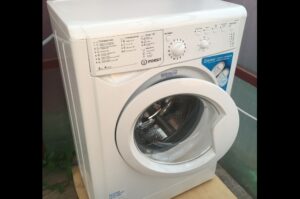 To start washing, you must at least close the machine tightly. Meanwhile, the door of the Indesit washing machine does not close very often - it does not click until it clicks or does not lock. As a result, the drum remains leaky, and the equipment does not allow the wash to start or threatens to leak. There is no need to put up with an open door - you can deal with the lock and blocking without contacting service. We will tell you what to do and how in detailed instructions.
To start washing, you must at least close the machine tightly. Meanwhile, the door of the Indesit washing machine does not close very often - it does not click until it clicks or does not lock. As a result, the drum remains leaky, and the equipment does not allow the wash to start or threatens to leak. There is no need to put up with an open door - you can deal with the lock and blocking without contacting service. We will tell you what to do and how in detailed instructions.
The mechanism has failed
The hatch may not close in different ways. Sometimes we are talking about the absence of an electronic lock, but more often the door simply does not lock into the grooves - the lock does not latch, the drum opens back. Often, it is as if something is preventing the machine from slamming shut: the locking mechanism rests against the body, but does not grab, but is pushed back. There are several reasons for this technology behavior.
- Door misalignment. Over time, door hinges sag, especially if the washer has been in use for a long time. Careless operation with sudden slamming and overhanging also has a negative impact on the hatch. As a result, the lock falls lower and does not fit into the groove on the body. The problem can be solved simply: just adjust the position of the “glass” and tighten the side fastenings.
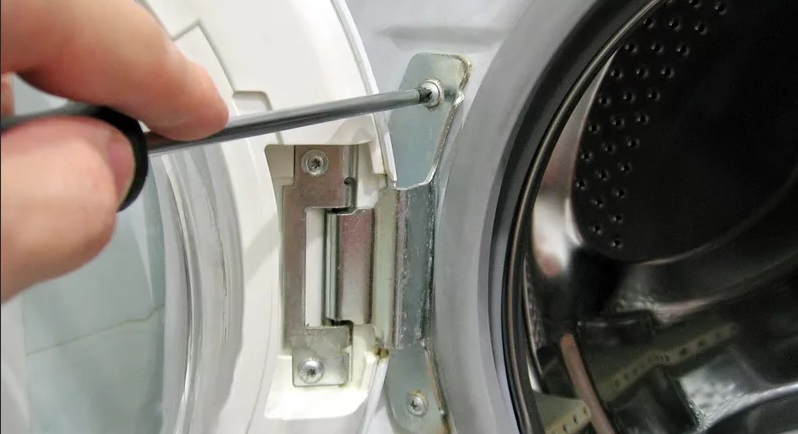
- Broken tongue. This is the metal rod in the lock that keeps the door closed. If it falls out or sags, the fixation is broken. To repair the lock, you need to disassemble the hatch and return the rod to its original position.
- Another problem with the lock. In addition to the tongue, other important components could break, for example, the hook.As a rule, it is impossible to replace or repair them - just install a new door.
Most often, the door lock breaks due to careless operation of the washing machine.
Often the guide, the plastic plate in the locking mechanism, fails. When the drum slams, it falls into a special groove, clicks and locks the system. But with prolonged use, the part wears out or breaks, which is why the door does not lock in the closed position and constantly opens. You can't even hear the characteristic click from the lock when it's activated.
It’s easy to check the condition of the guide:
- use a star screwdriver to loosen the fastening connecting the door to the side hinge;
- remove the door from its hinges;
- Unscrew the bolts located around the perimeter of the inside of the door;
- pry off the inside of the door with a flat screwdriver;
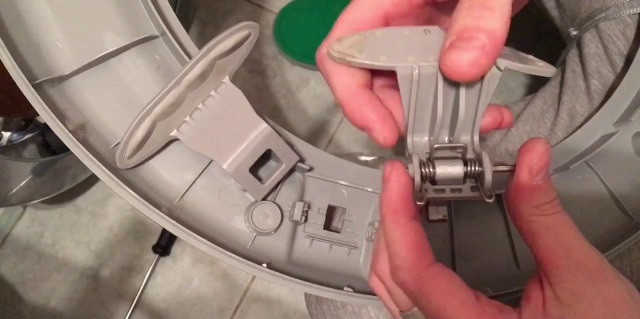
- “halve” the door;
- inspect the locking mechanism;
- find a breakdown.
It is not always possible to repair the door yourself. More often than not, it is difficult to find a replacement guide or hook: they are not sold in stores. As a rule, you can only return a fallen spring, plate or rod with your own hands. If the part is damaged, then there is only one way out - replace the lock, handle or the entire door.
When deciding to repair a door, you should be extremely careful. Such mechanisms contain many small details, and an unprepared person can only aggravate the situation.
No hook fixation
The washing machine will not close even if there are problems with the electronic lock. The user will slam the door, it will lock and click, but the washing machine will not start. Moreover, the machine will reset the program and display an error code indicating problems with the UBL.
UBL acts as additional protection for the washing machine from accidental opening of the door during washing. When the cycle starts, voltage is applied to it, it fires and blocks the hatch. If the device is faulty, the board cannot verify that the drum is sealed and cancels the program.
Sometimes the UBL does not break, but simply becomes clogged. Dust, fabric fibers or other small debris gets inside, which interfere with the normal distribution of the incoming current. Fixing the problem is simple: just clean the device.
It is strongly not recommended to test and repair the control board yourself - there is a high probability of worsening the breakdown!
The blocker is not activated even if the control board is broken - the command from the module simply does not reach the device. The electronic unit itself or its connecting elements, tracks or triacs are damaged. In any case, you will have to call a technician and request a comprehensive diagnosis of the part. It may need to be re-flashed or completely replaced.
It is not recommended to repair the “brains” of the washing machine yourself - there is a high probability of aggravating the situation, even leading to death. The cost of a new board is quite high, especially for the latest models of machines.
Make sure the lock is broken
If you suspect a breakdown of the UBL, do not rush. Before disassembling the device or buying a new one, you should make sure that it is faulty. To do this, you will need to dismantle the blocker and test it with a multimeter.
Before any repairs, it is necessary to disconnect the washing machine from communications: power supply and water supply!
The instructions on what to do are as follows:
- turn off the power to the washing machine;
- open the hatch;
- loosen the clamp tightened on the cuff using pliers or a screwdriver;
- pull the cuff off the drum;
- find the UBL, which is located behind the washing machine body opposite the door handle;

- unscrew the bolts holding the blocker;
- disconnect the wiring connected to the device;
- remove the UBL through the hole between the seal and the machine body.
The next step is to carefully study the factory instructions, or rather, the section with the UBL electrical diagram. Most interlocks have a similar design, but some manufacturers slightly change the location and purpose of the relay. Meanwhile, it is necessary to know exactly where the phase, neutral and common contacts are located. Otherwise, testing will be inconclusive.
Having dealt with the contacts, we proceed to diagnosing the locking device:
- turn on the multimeter;
- select the mode for measuring resistance;
- we hook the probe clamps to “zero” and “phase”;
- look at the display - a three-digit number should appear on it (if otherwise, then the UBL is faulty);
- change the position of the probes to common contact and “zero”;
- We evaluate the result (indicators “0” or “1” will indicate a breakdown of the device).
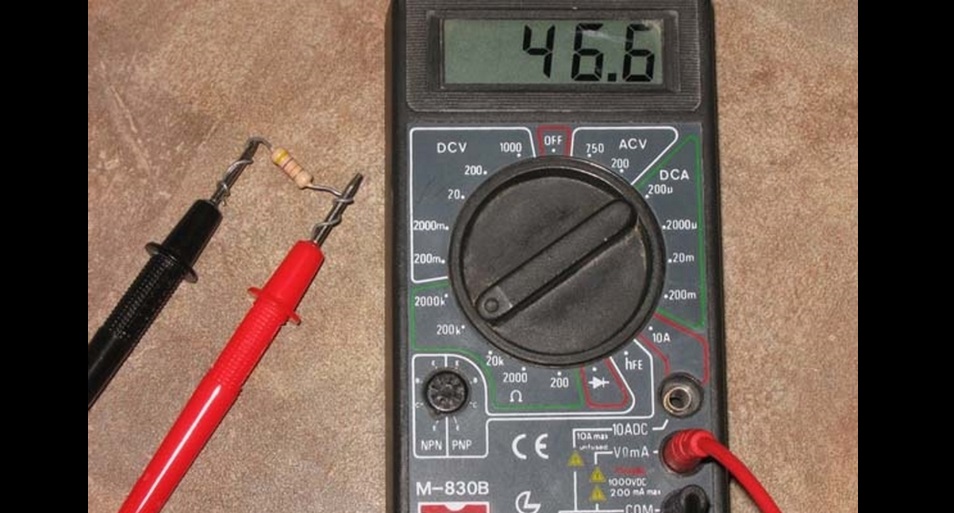
If the diagnostics confirm that the UBL is faulty, it will have to be replaced. Repairing the device is impractical - it is cheaper and faster to purchase a new one. The main thing is to choose the right analogue, specifying the serial number of your existing washing machine in advance and informing the seller about it. TYou can also bring an old copy to the store and ask them to find a replacement based on the sample.
The new UBL is selected according to the serial number of the washing machine.
You can install a new blocker yourself. You just need to follow the instructions described earlier in reverse order. Then we run the washing machine on a test cycle. Has the washing started? Then everything is done correctly.If the blocking does not work, then the problem is in the control board, and you cannot do without service.
Interesting:
Reader comments
- Share your opinion - leave a comment
Categories
Washing machine repair


For buyers

For users

Dishwasher




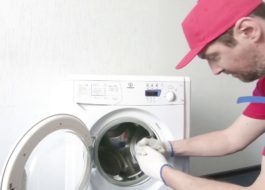












Add a comment